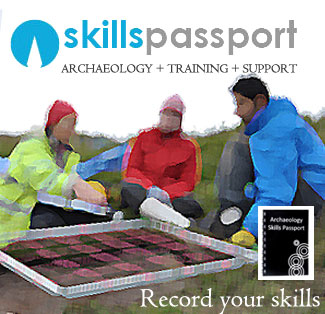Excavated contexts are recorded on context sheets which can vary in style depending on the organisation carrying out the excavation but in general they share similar characteristics.
Most will have sections for composition of soils or profiles for cuts and it is common practice to have special additional sheets available to record contexts such as; masonry, timber and skeletons
This is the primary record of the excavation both onsite and post excavation.
This field training pack aims to support you with archaeological recording processes. Archaeological Recording Practices Guidelines for archaeological excavation and recording techniques Gemma Stewart 2013
http://www.isgap.org.uk/sites/default/files/downloads/Archaeology%20Recording_Final.pdf
PRINCIPLE: Understand the procedure for the completion of a standard context record sheet [Deposit/Cut/Fill/Structural].
- Novice – Understands the basic PRINCIPLE without full knowledge of the methodologies used.
- Competent – Capable of carrying out single context recording under supervision/record checking.
- Proficient – Comprehends fully the principles and methodologies to be used in the active use of context recording. Able to carry out without supervision the creation of a context record, place it within the overall site record and actively engage in the systematic record keeping.
Professional tips:
Go through each box on the context card in turn, do not hurry or bet distracted – ensure the other records (photographs, samples, plans etc) are referenced and cross referenced.
Carry a crib sheet ( or Past Horizons Fieldworker Data Cards
) to help you fill in the record sheet.
Don’t forget to add your discussions to the sheet, and never cross out what you write, there is no such thing as wrong – this is the one chance to record everything about the context.
Understand the difference between single context recording and recording contexts.
Single context recording was initially developed by Ed Harris and Patrick Ottaway in 1976, from a suggestion by Lawrence Keene. It was further developed by the Department of Urban Archaeology (Museum of London) from where it was then exported, in the mid-1980s by Pete Clarke to the Scottish Urban Archaeological Trust and Nick Pearson to the York Archaeological Trust.
It has become a popular system of recording and planning being used in many countries in Europe and in Lebanon, it is especially suited to the complexities of deep, typically urban, archaeology. Each excavated context is given a unique “context number” and is recorded by type on a context sheet and perhaps being drawn on a plan and/or a section. Depending on time constraints contexts may also be photographed, but in this case a grouping of contexts and their associations are the purpose of the photography. Finds from each context are bagged and labelled with their context number and site code for later cross reference work carried out post excavation. The height above sea level of pertinent points on a context, such as the top and bottom of a wall are taken and added to plans sections and context sheets
If you do one plan per context then you are carrying out single context recording.
Single context recording of a stratigraphically excavated sequence evolves into an overlay of planned contexts that build a Harris matrix during excavation.
- The MoLA archaeological site manual is the Bible of archaeologists – Now sadly out of print, it is available to download here: MoLA Archaeological Site Manual
-
BAJR Guide 23: Recording, Report, and other templates
- Past Horizons Fieldworker Data Cards


